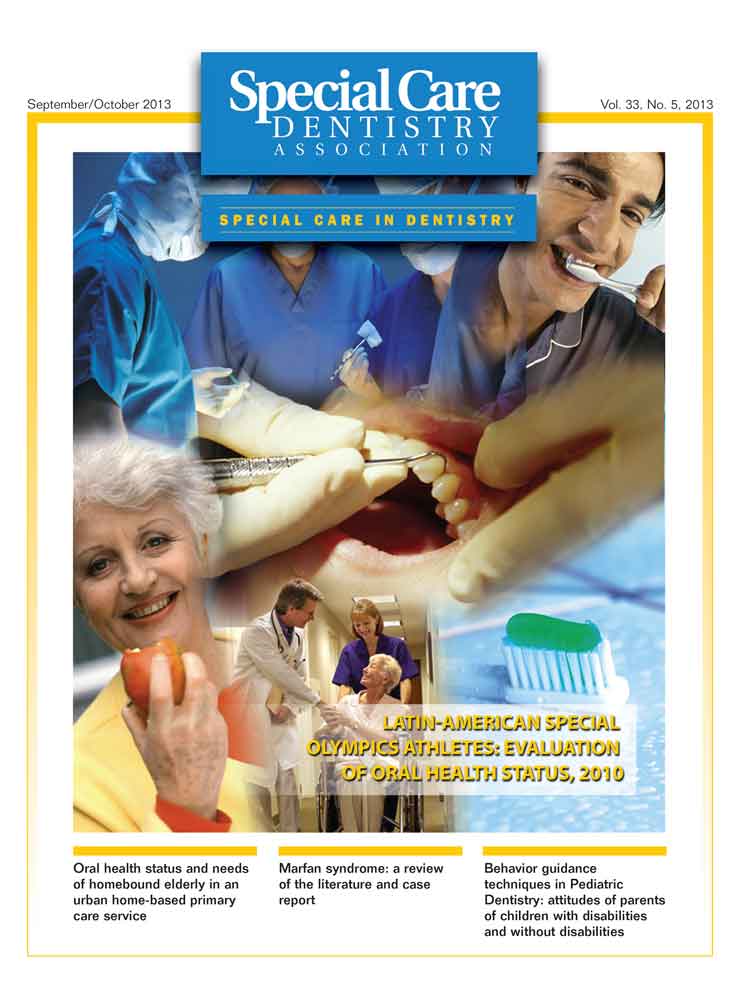Behavior guidance techniques in Pediatric Dentistry: attitudes of parents of children with disabilities and without disabilities
ABSTRACT
This study compared the parental acceptance of pediatric behavior guidance techniques (BGT). Forty parents of children without disabilities (Group A) and another 40 parents of children with disabilities (Group B) were selected. Each BGT was explained by a single examiner and it was presented together with a photograph album. After that parents evaluated the acceptance in: totally unacceptable, somewhat acceptable, acceptable, and totally acceptable. Results indicated that in Group A, the BGT based on communicative guidance was accepted by most participants. In Group B, just one mother considered totally unacceptable the voice control method and other two, tell-show-do. For both groups, the general anesthesia was the less accepted BGT. There was statistically significant difference in acceptance for protective stabilization with a restrictive device in Group B. Children's parents with and without disabilities accepted behavioral guidance techniques, but basic techniques showed higher rates of acceptance than advanced techniques.




